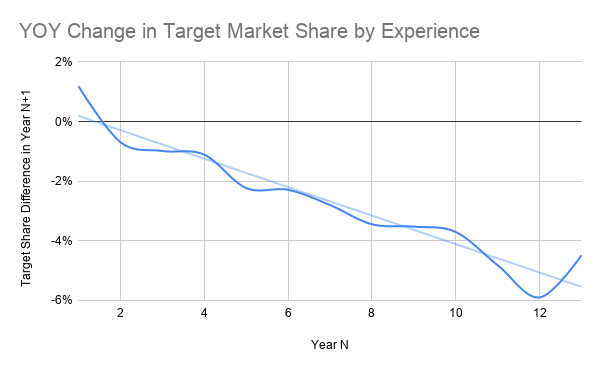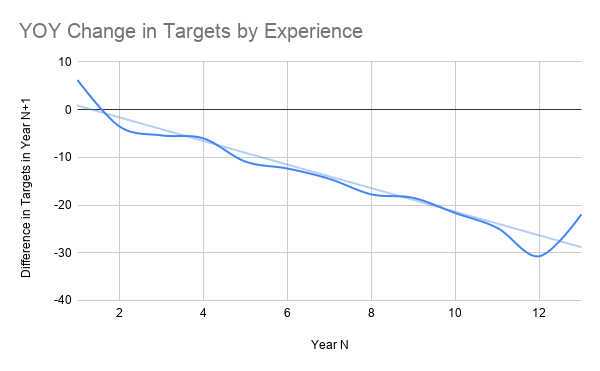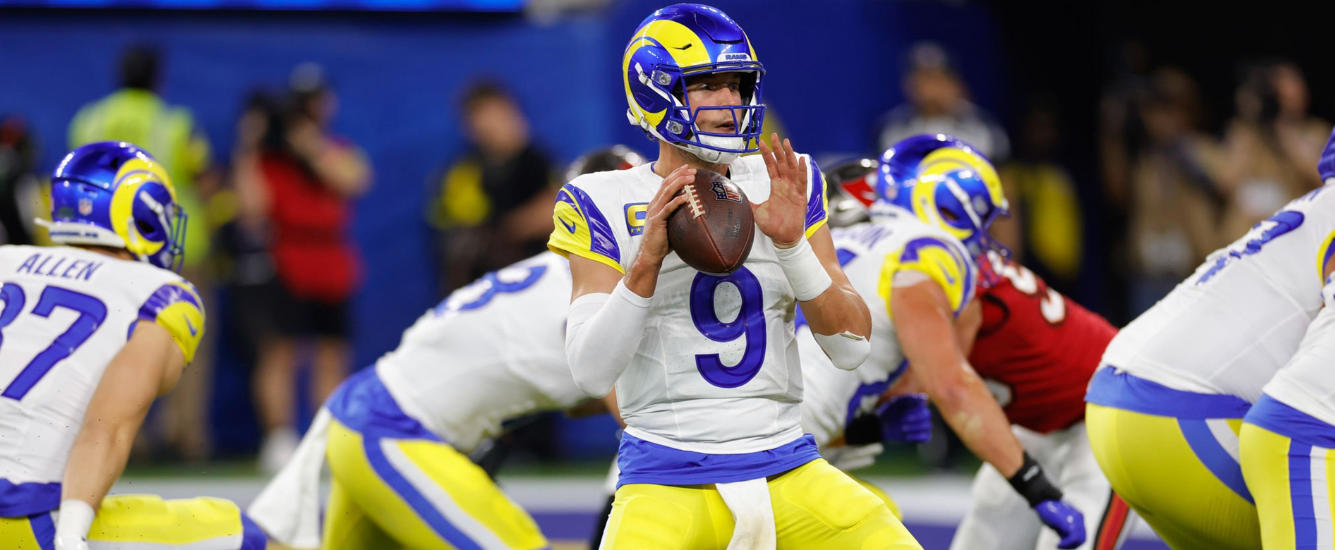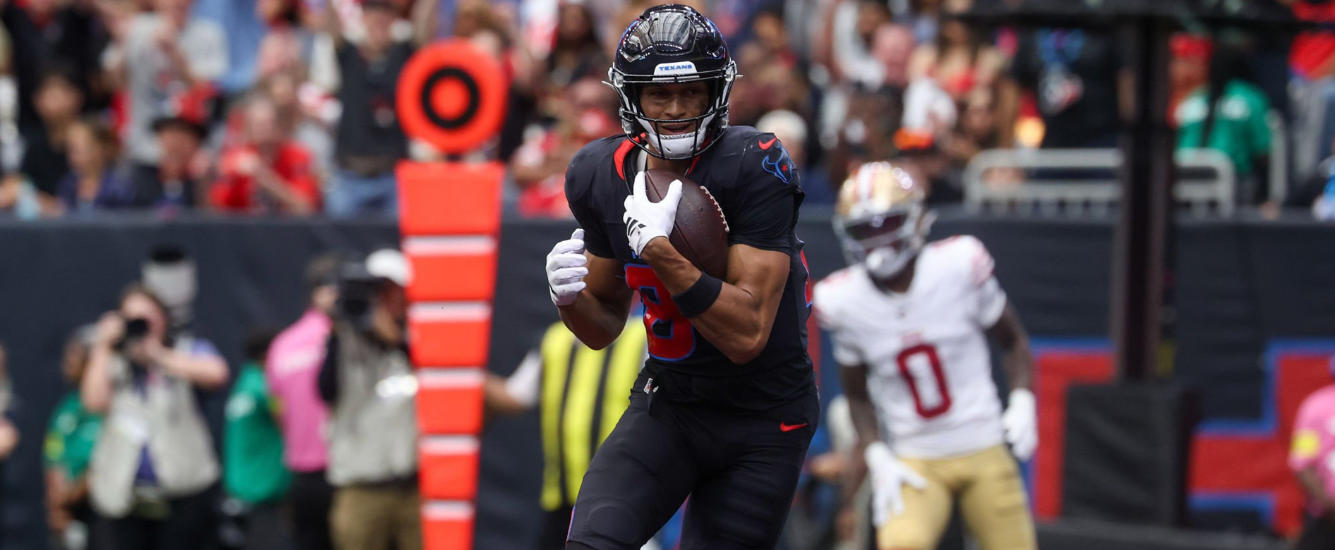Much of the research that happens in this space suggests our fantasy teams should nearly always be younger than we tend to think. Breakouts and busts both happen earlier in players’ careers than the traditional age curves would lead you to believe. Although it’s true that many of best WRs in the NFL last year were somewhere between 25 and 30 years old,[1]Only two of the top 15 WRs last season fell outside this range — Chris Godwin was 23 and Julian Edelman was 33. it’s a mistake to think that we should generally be targeting players in this age range.
The main reason this is a mistake is that we want to target players who are likely to be better than they were last year, not worse. For one thing, last year’s results are the most powerful predictor of current season ADP. For the sake of argument, let’s assume last year’s results are the only thing that goes into current ADP. This would mean that, all things equal, a player who performs exactly as well as he did the year prior will provide no excess value. Players who underperform their prior season results are likely to find themselves on losing fantasy squads, whereas those who outperform prior season results will be the current season’s league winners.
Reality doesn’t quite work this way, but it’s pretty close — previous season PPR scoring predicts over 53% of the variance in current season ADP.[2]Keep an eye out for work from Michael Dubner on a metric that is even more effective at predicting ADP and helping you find undervalued players for your best ball teams.
The question becomes: how do we determine which players are going to improve from one year to the next? If it’s true that targets are the gasoline we want to pour on the flame of talent, then what we want to find are WRs who are likely to see an increase in opportunity next year. Part of finding those guys involves top-down projections that take a complete view of an entire team. But it also involves player-level factors such as age and experience (which inform our top-down projections). How then do age and experience impact opportunity?
Opportunity Changes
The data I’m presenting below is probably not going to surprise many long-time RotoViz readers. We’ve long held that Year 2 wide receivers are the biggest edge in fantasy. Still, visualizing these trends in new ways reinforces that belief in a striking way.
We can measure opportunity in many ways. The way we do it when formulating projections is often to use target market share. And here we see an important trend forming already:

The chart above measures changes in target share from one season to the next. In other words, the only time to expect a positive change in target market share is between Year 1 and Year 2. And we see this with raw targets as well.

Of course, not all rookies are created equal. While WRs entering Year 2 are the best bets, all things equal, to see an opportunity increase, age also plays a role, in both target market share:
Footnotes[+]Footnotes[−]




















